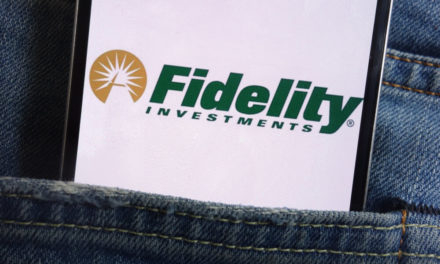Alphabet (GOOGL) and Amazon.com (AMZN) have called a cease-fire.
YouTube TV is coming to Fire TV, according to an official blog post from the platform provider. This move unites these giants in the battle for America’s living rooms.
They want to win the streaming-TV wars. Together, they stand a very good chance of doing just that.
Traditional cable TV providers should worry.
We’re already starting to see a once-in-a-generation shift. In 2019, the number of people who subscribe to “Over the Top” (OTT) media services is set to surpass traditional pay TV subscribers for the first time.

About 34% of all U.S. households have cut the cord from traditional cable in 2019, according to The Convergence Research Group. And online services are poised to bring in $22 billion in 2019.
This kind of seismic shift doesn’t come along too often in the stock markets. But when it does, it disrupts the status quo with new business models … and brings huge opportunities to investors.
It may seem strange to buy a TV subscription from Amazon or Google. But this is just the logical next step in their plan to monetize and monopolize your time.
Big tech companies across the board have played the long game and are now offering alternatives to traditional media that are very compelling.
This leaves a sizable market for competitive tech, media and internet service providers to fight over.
A key part of the plan to entice cord-cutters is brand recognition. Amazon Prime Video is currently in 25% of U.S. households, and YouTube is by far the most popular video platform in the world.
Activated in 2005, YouTube is a platform of 1.9 billion monthly users. Alphabet claims that 80% of people age 18 to 49 will visit the site in an average month. They can watch on any screen with an internet connection, and analytics show they’re spending more time browsing short videos than watching regular TV.
YouTube TV is a natural extension of the brand. It’s as slick as Netflix (NFLX), with a live TV twist.
For $50 a month, subscribers get six individual accounts for family members, AI-powered search, unlimited cloud-based video recording for true on-demand programming and 70 channels, including local sports and news. Everything streams over the internet. There is no need to rent cable boxes, schedule installation or commit to long term contracts.
It’s a cable cord-cutter’s dream. And now it’s coming to Fire TV, Amazon’s over-the-top digital TV platform.
Comprised of dongles, micro consoles and software license agreements with TV makers, Fire TV brings an intuitive user interface and Alexa integration.
TechCrunch reported in May that Fire TV is the most popular streaming media player platform in the United States, United Kingdom, Germany, India and Japan. The number of users now tops 34 million.
In the past, Google and Amazon were locked in a bitter feud that kept YouTube off Amazon Echo, Fire TV and other consumer technology devices. And Google hardware was locked out of the Amazon online store. But the tech giants put that in the rear-view mirror in April with a historic agreement.
The pair have become unlikely allies, locked in a battle with traditional pay TV companies and even internet service providers.
As direct-to-consumer business models proliferate, traditional barriers into the living room are falling. More players — including tech and media companies and internet service providers — are racing to develop and offer media content.
- Apple is set to launch Apple+, a subscription video-on-demand service in November.
- Disney Plus, a massive new subscription video on demand (SVOD) service, will follow two weeks later.
- And Peacock, a new direct-to-consumer media channel from Comcast (CMCSA), will debut next year.
Investors should not miss the size of this opportunity.
Although penetration is falling, a staggering 44% of U.S. households still had cable service in the first half of 2019. Pay TV revenue was worth $103 billion, according to research collected at Statista.
The tech companies are coming with lower prices, more content and better user experiences.
They will win part of this business.
And with the arrival of 5G networks to seamlessly stream movies, TV shows and other massive media files, consumers will have even more reason to cut their cable cords. Learn more about that — and get my top 5G pick — here.
Best wishes,
Jon D. Markman, Weiss Research Inc.




